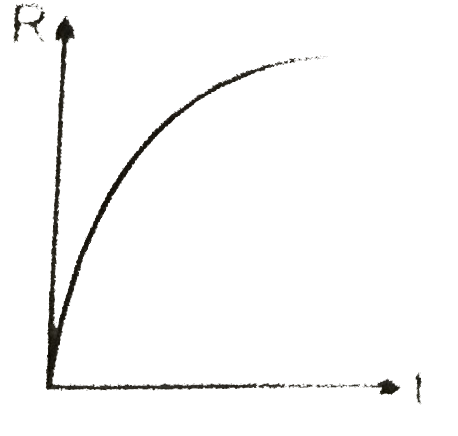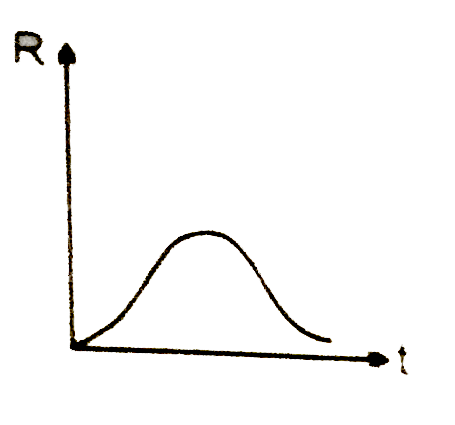If decompositon reaction A(g)toB(g) follows first order linetics then the graph of rate of formation (R ) of B against time t will be :Solution in Telugu




The correct Answer is:C
Step by step video & image solution for If decompositon reaction A(g)toB(g) follows first order linetics then the graph of rate of formation (R ) of B against time t will be : by Chemistry experts to help you in doubts & scoring excellent marks in Class 12 exams.
Updated on:21/07/2023Topper's Solved these Questions
- CHEMICAL KINETIC & NUCLEAR CHEMISTRYBOOK - NARENDRA AWASTHICHAPTER - CHEMICAL KINETIC & NUCLEAR CHEMISTRYEXERCISE - Level 1 (Q.3 To Q.32)
2 Videos
- CHEMICAL KINETIC & NUCLEAR CHEMISTRYBOOK - NARENDRA AWASTHICHAPTER - CHEMICAL KINETIC & NUCLEAR CHEMISTRYEXERCISE - Level 1 (Q.33 To Q.62)
3 Videos
- SURFACE CHEMISTRYBOOK - NARENDRA AWASTHICHAPTER - SURFACE CHEMISTRYEXERCISE - Level 3 - Assertion - Reason Type Questions
1 Videos
Similar Questions
The reaction of A2 and B2 follows the equation
A2(g)+B2(g)→2AB(g)
The following data were observed
[A2]0[B2]0Initial rate of appearance of AB(g)(inMs−10.100.102.5×10−40.200.105×10−40.200.2010×10−4
The value of rate constatnt for the above reaction is :
View SolutionHalf-life (t1/2) and completion time (T) of the reaction (A→2B) are if initial concentration A is 1M and k = 0.001M/ min :
View Solutioneach question constain STATEMENT-1(Assertion ) and STATEMENT - 2 (reason). examine the statement carefully and work the correct answer accoridng to the instructions given below :
STATEMENT-1: Dispersed phase particles of colloidal solution cannot pass through ultra -filter paper.
STATEMENT-2: The size of colloidal particles are larger than the size of true solution particles.
View SolutionA radioactiev nuleus X deays to a stable nuleus Y . Then, time graph of rate of formation of Y against time t will be:
View SolutionWhich graph represents zero-order reaction [A(g)→B(g)] ?
View SolutionIf decompositon reaction A(g)toB(g) follows first order linetics then the graph of rate of formation (R ) of B against time t will be :
View SolutionIn the reaction
PCl5(g)⇔PCi3(g)+Ci2(g)
a graph in plotted to show the variation of rate of forward and backward reactions against time. Which of the following is correc?

Q>KQ=KQ<K
View SolutionFor a first order gas phase reaction :
A(g)→2B(g)+C(g)
P0 be initial pressure of A and Pt the total pressure at time 't'. Integrated rate equation is :
View SolutionGive two examples for each of zero order and first order reactions. Write the equations for the rate of reaction in terms of concentration changes of reactants and products for the following ractions. 1) A(g) +B(g) to C(g) +D(g) 2) A(g) to B(g)+C(g) 3) A(g) +B(g)to C(g)
View SolutionFor the first order gas phase decomposition reaction,
A(g)→B(g)+C(g)
if P0 is the initial pressure of A and Pt is total pressure after time t, then
View SolutionConsider a first order gas phase decomposition reaction given below : A(g)toB(g)+C(g) The initial pressure of the system before decomposition of A was P_(i) . After lapse of time 't', total pressure of the system increased by x units and became 'P_(t)' . The rate constant k for the reaction is given as ..................... .
View SolutionFor the reaction : A(g) rarr B(g) + C(g) Concentration of 'A' varies with time (in sec) as : [A]_(T)=[10=0.2T^(2)]M The time at which rate of formation of 'B' is 1 M/sec.
View SolutionFor a first order gas phase reaction : " "A(g)rarr2B(g)+C(g) P_(0) be initial pressure of A and P_(t) the total pressure at time 't' . Integrated rate equation is -
View Solution2A(g)rarr2B(g)+3C(g) is a first order reaction . When the reaction started , the pressure of the system was P_(0) , and it was found to be P_(t) after time t . The rate constant of the reaction can be expressed by the equation -
View SolutionFor the reaction : 3A_((g))rarr 2B_((g)) , the rate of formation of 'B' at 298 K is represented as ln((d[B])/(dt))=-4.606+2ln[A] . The order of reaction is
View SolutionIf decompositon reaction A(g)toB(g) follows first order linetics then the graph of rate of formation (R ) of B against time t will be :
View Solution
